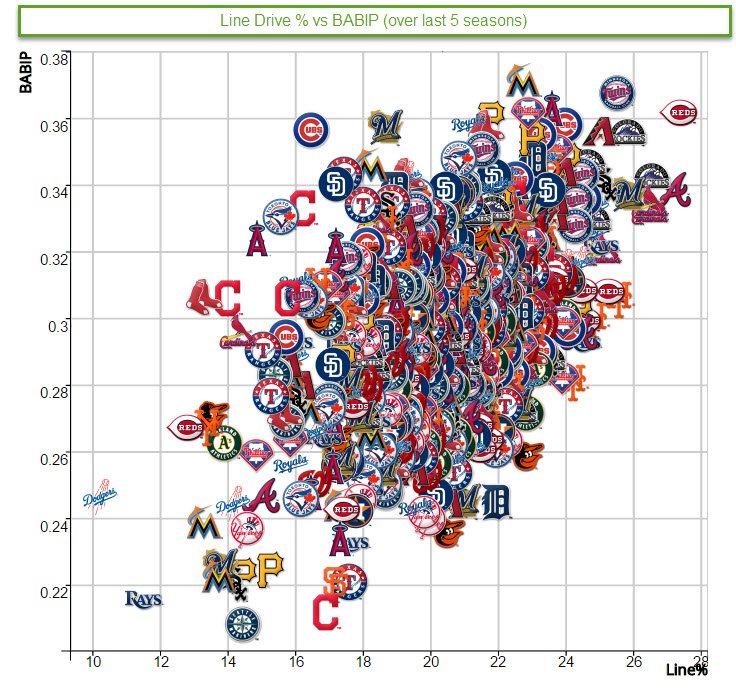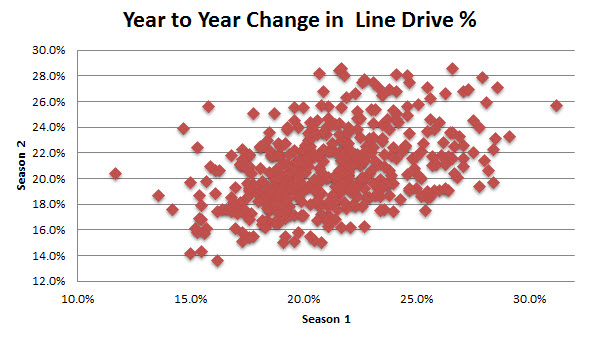Entering this season I had zero expectations for Jose Ramirez. I thought he was just another Jolbert Cabrera or Enrique Wilson—good guys to have on the roster due to their versatility, but no real value in the lineup.
Ramirez is just 23, but had already played 180 games at the major league level entering 2016 without showing any promise as an offensive threat. Even his minor league numbers the past few seasons have been modest, especially for a guy already getting opportunities at the major league level.
But over the past four months something has clicked for Ramirez. He’s blossomed into a legitimate threat in the Indians lineup—even batting cleanup in a few games.
However, mediocre players have fluky seasons all the time. Remember Marty Cordova in 2001? Or Ronnie Belliard in 2004?
Both Cordova and Belliard were scorching hot for much of the year. Belliard was batting .300 with a .371 OBP on August 1, but reality set in and he finished the year at .282 and .348. Similarly, Cordova’s average peaked at .336 as late as August 10, but he crashed down the stretch and finished at a more reasonable .301.
Back then we didn’t have many advanced stats to dissect Cordova and Belliard in an effort to evaluate their staying power. After all, not all hits are created equal. In a small sample size, a hitter can simply get lucky—likely the case for both Cordova and Belliard.
A closer look at the types of hits, however, can tell us a lot about a hitter’s ability to sustain success.
Arguably the most important factor is line drive percentage. We’ve learned in recent years that BABIP can be kind of fluky, but players with a high line drive percentage will almost always have an elevated BABIP. Take a look at the graph below from ESPN’s Stats & Info…
This graph shows players over the past five seasons, and while it’s not quite a perfect correlation, there is an obvious trend. A high line drive will substantially increase the odds of a high BABIP (and, therefor, a high batting average).
The line drive/BABIP graph is relevent to Ramirez because he currently ranks eight in MLB with a line drive percentage of 26.3 percent. Predictably, the increase in line drives has elevated his BABIP to .336—well above his abysmal career rate of .262 entering this season.
So having a high line drive percentage is obviously great, but how sustainable is Ramirez’s pace?
To attempt to answer this I looked back at just over 500 qualifying players from the past five seasons and compared their line drive percentage from one season to the next.
The chart below shows how this sample size turned out…
A perfect correlation from one year to the next would produce a straight line, which obviously isn’t the case, but there is an upwards trend.
In other words, this chart shows that if you have a high percentage in Season 1 you are more likely to have a high percentage in Season 2—but certainly not immune to a rise or fall of a few percentage points.
To determine just how likely a decline is for Ramirez, I also looked specifically at movement within certain groups. I was curious if the elite line-drive hitters were better at sustaining their rates.
Among players who posted a line-drive percentage of at least 25 percent in Season 1, 90.5 percent produced a line-drive percentage of at least 20 percent the following season. In other words, if you were elite one year (the group Ramirez is in), you should at least be above average the following season.
Similarly, among players with a line-drive percentage under 20 percent, only 6.5 percent of that group jumped up to a line-drive percentage of 25 percent the following season.
So while some fluctuation occurs, the elite remain near the top and bottom tier remain near the bottom.
Logically, this makes sense. Consistently hitting the ball hard is a skill. But it’s also an incredibly difficult skill to master, so some luck (and other factors such as injuries) should cause this number to fluctuate from year to year.
So, is Ramirez really this good?
Obviously we’re looking at just one statistic here but it certainly appears to indicate Ramirez’s production has been more than just dumb luck. He’s hitting the ball hard at an exceptional rate and history tells us that’s probably a repeatable skill.
Baseball is a crazy game and maybe Ramirez is one of the outliers. But there is definitely enough evidence to suggest we should be optimistic about his future in the Tribe’s lineup.





Ramirez has always been good at making contact, even back in 2014. He’s always had one of the lowest swinging strike rates on the team along with a high contact percentage outside of the zone. I predicted a breakout for him last year but was obviously wrong, but I stuck to it this year saying before the season that he’d hit .290 or better. His low soft-contact rate combined with pretty good speed is what drives his BABIP, and his ability to put the ball in play far more often than the average player helps buoy that .300 average.
Thanks for the interesting read. It’s definitely been fun watching him play this year!